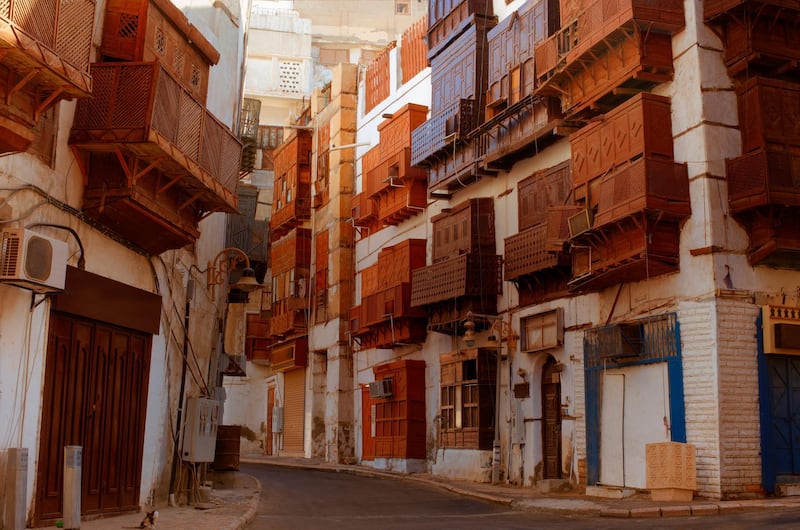When you arrive at the colourful painted posts that welcome tourists to Jeddah's Al Balad district, take a moment to get your bearings. This will be handy once you step inside the World Heritage Site, where every street looks alike and where the buildings come with stories that will draw you in for hours.
Preserving Old Jeddah through art
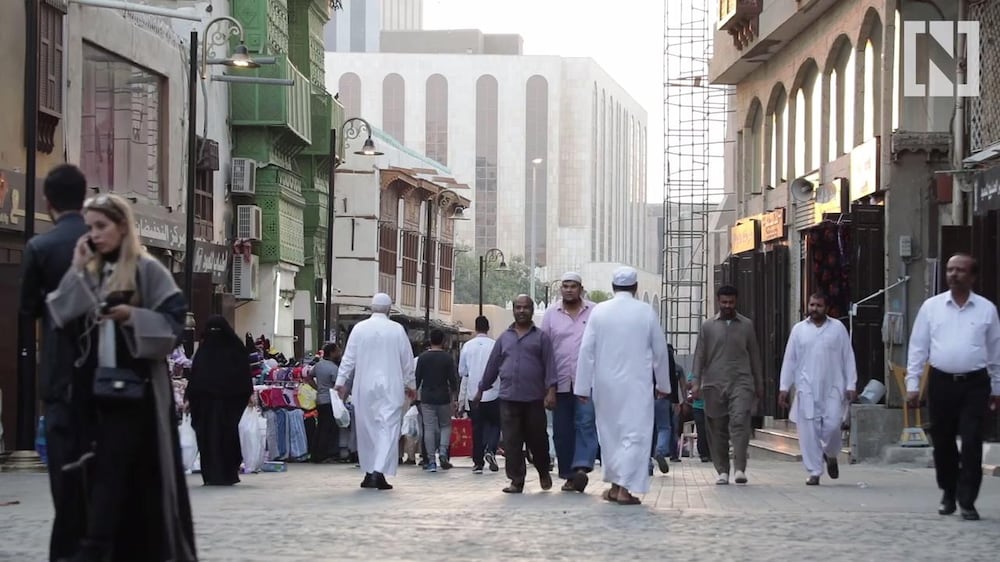
There are crumbling developments, dusty streets and a swarming street-cat situation – but don't let the worn-down image of Al Balad put you off. The area has a fascinating history. It was founded in the seventh century and was once the beating heart of Jeddah, Saudi Arabia's second-largest city. The town was formed as an ancient trading port and acted as the primary gateway to Makkah. Today, it is famous for its traditional buildings, which were constructed with coral-stone and decorated with intricate latticed windows.
Al Balad's fascinating rabbit warren of streets are more easily navigated when you know what you're looking for. So here are nine places to add to your itinerary.
Start at the village majlis
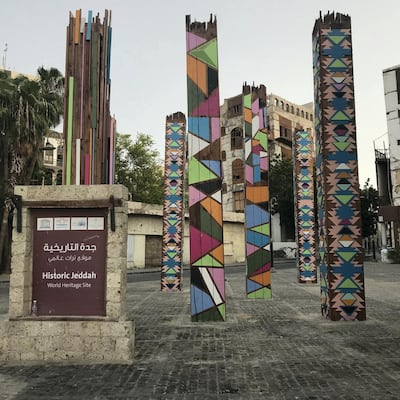
A few steps from the main entrance of Al Balad, just behind the replica Jeddah Gate, which denotes the start of the historic district, is a ramshackle majlis. It's easy to walk right past this spot, but pause for a moment as this red-cushioned seating area is where all the town's community meetings take place. They are typically attended by men, who have the primary decision-making powers here – but if you look across the street, you'll see a three-storey house with a series of small, secluded balconies and windows. Known as rawasheen, these bay windows were once the place from which women would assess their would-be suitors. Shielded by the wooden shutters, they could see the men proposing marriage in the majlis below, and would decide yes or no, while retaining their privacy. Don't be shy if there are some men sitting in the majlis when you arrive, it's also a place for them to relax and hang out. Say hello and they'll give you a friendly welcome to the town.
Grab a drink at Historical Nights
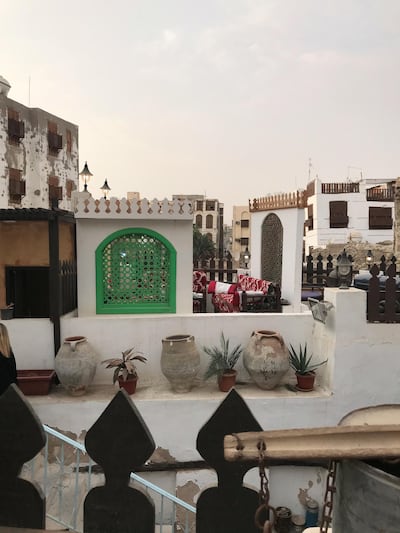
Once you're inside Al Balad, Historical Nights is a quirky cafe that has great coffee and awesome views of the town. Pop inside and head upstairs to the second level for the best rooftop vistas. Huge air conditioners help to combat Jeddah's sticky humidity; make a beeline for the cosy majlis area for the best vistas, which you can pair with some not-too-shabby desserts.
Step back in time at Baeshen House
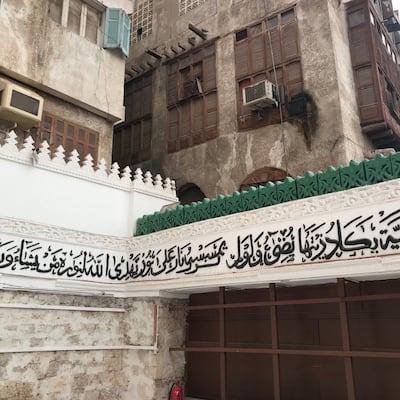
Beside Historical Nights, Baeshen House is a good example of the coral stone and wooden buildings that make up the majority of Al Balad's properties. Old photographs on the walls depict the merchants who were part of the Baeshen family and there's a multimedia room inside that's packed with books, newspapers and more information about the area. Take a seat on a rowshan (singular of rawasheen) that are typical to the district. These seats traditionally represented the coolest place in the house to sit, thanks to their unique structure, jutting out of the main wall and allowing for better air circulation. This towering structure also has its own mosque. Located in the backyard, the open-air place of worship is painted brilliant white and has Arabic calligraphy adorning the walls.
Haggle on the district’s old pilgrimage road
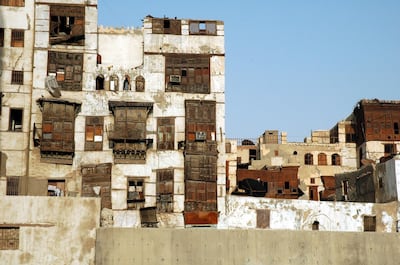
Once the only way for pilgrims to reach Makkah, the old pilgrimage road, also known as Al Dahab Street, is a place that retains a real sense of Arabia. Bustling with street vendors, carts loaded with trinkets and brightly coloured stores selling nuts, spices, abayas, shoes, fabrics, clothes and more, it's a great place to pick up an unusual souvenir. Don't forget to haggle with the storekeepers. As you stroll, keep an eye out for a three-storey building fronted by mossy green rawasheen. There, you'll spot one of the district's most original architectural feats – a cylindrical shaped rowshan spanning two levels of the house. The design serves no purpose other than to show passers-by how wealthy the family were, but it makes for good Instagram fodder.
Check out Bait Nassif
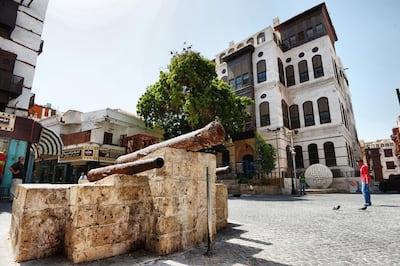
At the top of the old pilgrimage road, you'll find Bait Nassif, one of Al Balad's most important buildings. This is the place where King Abdulaziz, the founder of Saudi Arabia, stayed for three years when he was in Jeddah. The towering building is one of the best-preserved in the district. It's currently undergoing further renovations, with plans for it to be reopened as a museum. Earlier this year, Christie's held a special charity auction in the house, where 43 pieces of contemporary art were sold to raise funds for the reconstruction of the district. Despite the ongoing work on the house, it retains a distinct sense of grandiosity. Four storeys tall, it once had a pathway inside that allowed the king to ride his horse or go by camel directly from the street up to his office on the second floor.
Take in some Saudi art
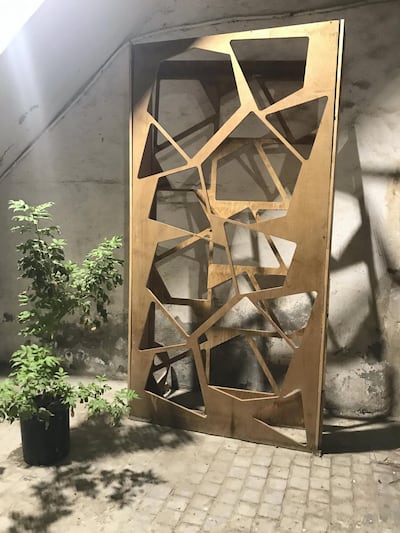
Today, the area around Bait Nassif is under the management of a young Saudi artist named Ahmad Angawi. His art is inspired by Islamic principles rather than the Islamic aesthetic, and he creates new works using traditional methods. Pop into The House of Traditional Arts to see some of his pieces, or simply wander around the neighbourhood, where you're bound to spot his creations dotted around the square. The artist has also created a spice garden path, where he has planted the herbs and spices that would have been traded in the early days of Al Balad. Wander through the cobbled lane and smell, touch or even taste the leaves for a multisensory experience.
See Jeddah’s oldest mosque
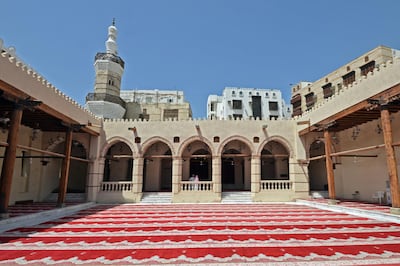
The city's oldest mosque, Masjid Shaffie, also known as Umary mosque after Prince Umar, who was the second caliph of Islam, is also in Al Balad. The site is more than 1,400 years old, but the building is in good shape, having been rebuilt 400 years ago, and then renovated again around 2009. The impressive minaret dates back some 800 years and is considered the oldest in the area. Inside the mosque, there's a huge water tank that fills with rainwater – it was historically used for domestic purposes and it's still used for various tasks today. The marble pillars date back to the early Islamic era and are believed to have been brought to Jeddah by traders from Ethiopia.
Taste the town's best bread
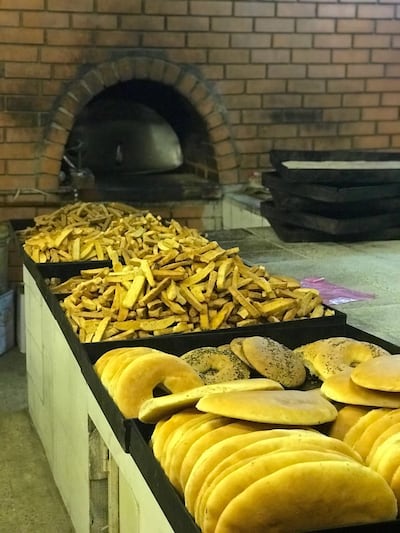
If you didn’t know this place existed, there’s a good chance you’d wander right past it. Located adjacent to Talat Al Aydarus street, Saidi Bakery is probably easiest to find by following the scent of freshly baked bread. This tiny spot has been baking traditional bread for almost 100 years, and you can get a tasty piece of khoobz straight from the flames of the brick oven for just a riyal or two.
Mingle with the locals
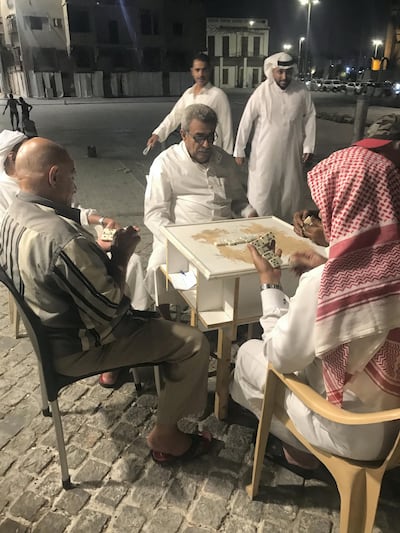
Al Balad is a city of two sides. On the one hand, it's a crumbling district that's home to low-paid immigrants hailing from Yemen, Africa, India and Pakistan. It's loaded with more street cats than it can handle and is in need of some essential maintenance. On the other, it's a historically fascinating region that put Jeddah on the map as a trading point and reaped the rewards as rich merchants achieved commendable architectural feats as they built their houses. But the real joy of the town is the people. While you'll likely get stared at – female tourists not wearing abayas will almost certainly garner attention – everyone is very friendly. Smile and you'll instantly put most people at ease. Pass by the children's corner where little ones bounce on trampolines and teenagers crowd around video screens installed outside on the park walls. Ask and they'll let you join in. Buy some grapes from the sellers pushing the old carts around the streets and you can expect some friendly banter. Even the men playing dominoes in the street, where the games get decidedly heated, aren't averse to company.
____________________
Read more:
Welcome to tiny Haql: Saudi's defunct gateway to the Red Sea and the future site of Neom
Hilton aims to bring 41 new hotels to Saudi Arabia by 2030
New Saudi Arabia tourist visas: everything you need to know
Saudi Arabia's 'Petra plus': Everything you need to know about visiting Al Ula
____________________
